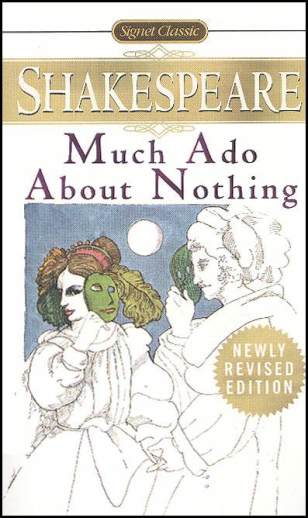We use cookies to make your experience better. To comply with the new e-Privacy directive, we need to ask for your consent to set the cookies. Learn more.
Much Ado About Nothing
This edition includes an overview of Shakespeare's life, an introduction by the editor, David L. Stevenson, dramatic criticism from past and present critics, a comprehensive stage and screen history of notable actors and productions, and notes defining unknown terms. 166 pgs, pb.
Much Ado About Nothing casts the lovers Benedick and Beatrice in a witty war of words while the young Claudio is tricked into believing his love Hero has been unfaithful in this play that combines robust humor with explorations on honor and shame.
This revised Signet Classics edition includes unique features such as:
- An overview of Shakespeare's life, world, and theater
- A special introduction to the play by the editor, David L. Stevenson
- A note on the sources from which Shakespeare derived Much Ado About Nothing
- Dramatic criticism from Charles Gildon, Lewis Carroll, George Bernard Shaw, and others
- A comprehensive stage and screen history of notable actors, directors, and productions
- Text, notes, and commentaries printed in the clearest, most readable text
- And more…
Set in the quiet town of Messina, Italy, the respected nobleman Leonato is preparing for the return of his friends from war. Upon their arrival, Claudio quickly falls in love with Leonato's daughter Hero, and Benedict and Beatrice (Leonato's niece) secretly fall in love under a mutual pretense of dislike for one another. When the trouble-causing Don John creates mischief for these young couples, will they fall victim to his efforts or will love sustain them?


need it for language arts through literature
to go along with LLATL Green book
This book is an assigned reading for Learning Language Art Through Literature green.